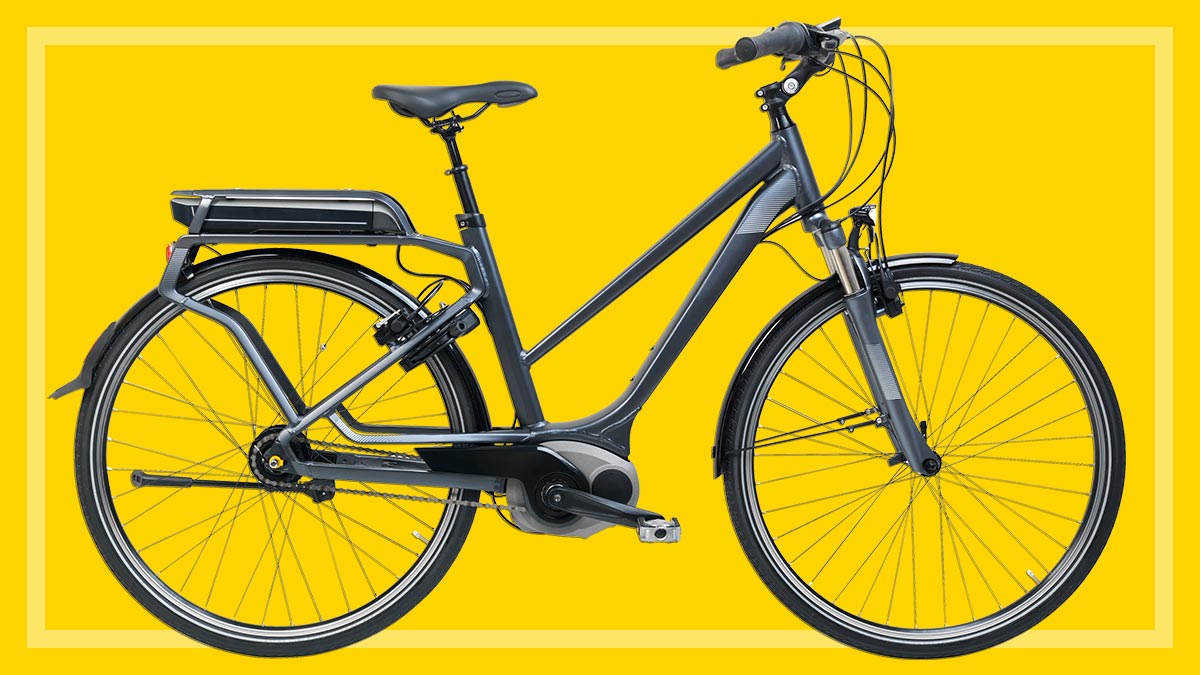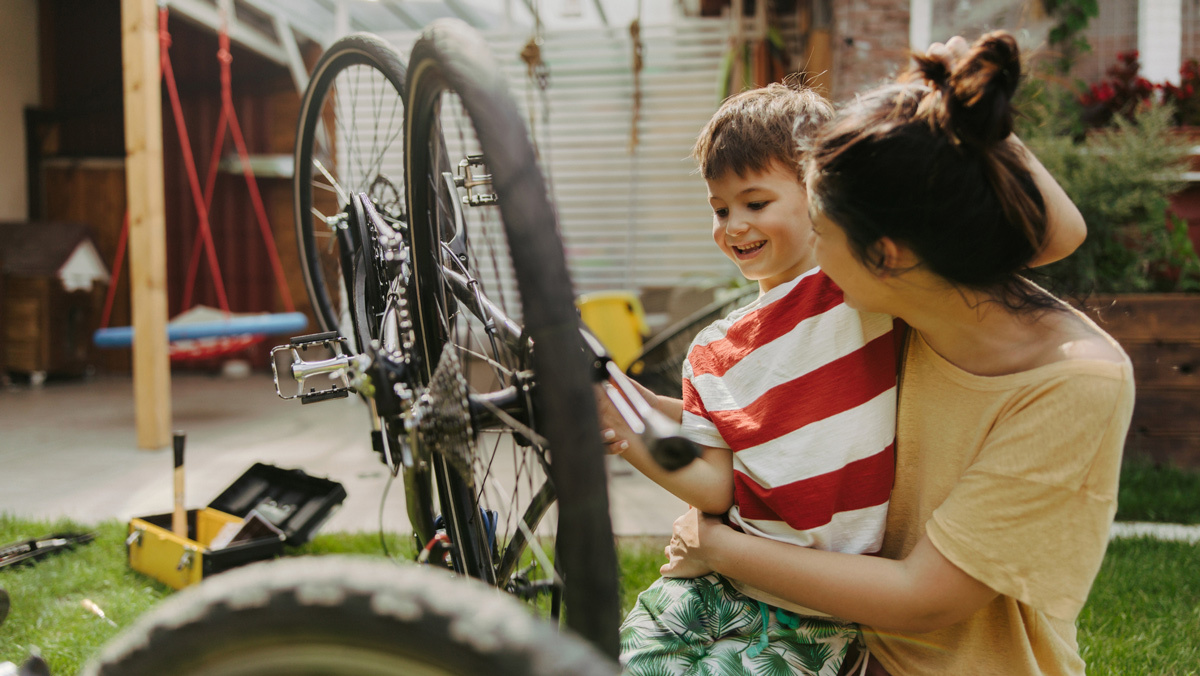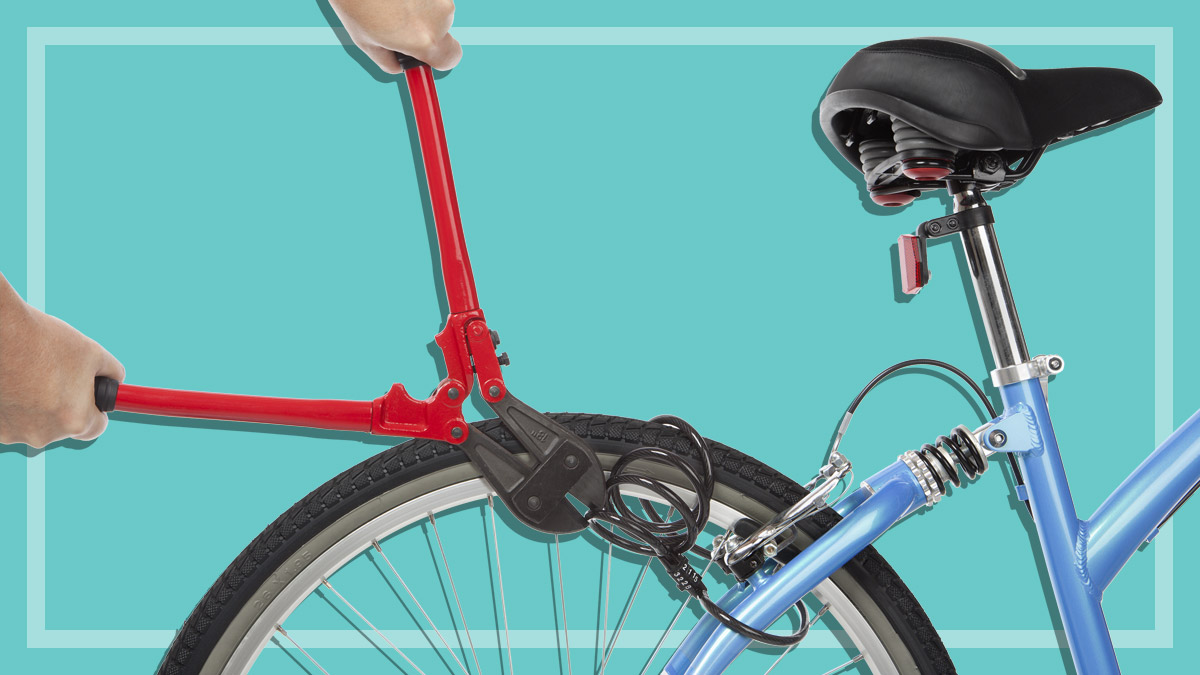Get our independent lab tests, expert reviews and honest advice.
How to buy the best bike for your needs

If you’re thinking about becoming a commuter cyclist or just enjoying a weekend ride, you’ve probably found there’s a huge range of bicycle types and prices to choose from. We’ll help you navigate the types of bikes available, choosing the right size, components such as gears and frames, and the accessories worth considering.
On this page:
- Types of bike
- Choosing the right size
- Frame material – steel, aluminium or carbon fibre?
- Gears – how many and what type?
- Wheels and tyres
- Grips, pedals and saddle
- Bike accessories
- City cycling tips
- Bike-shopping checklist
- Cost
Types of bike
First up, choose a bike that’s a good fit for the kind of riding you’ll usually do. For example, if you’re going to be riding mainly in the city you might not want a mountain bike. Likewise, a road racer might not be the best pick if you just want to ride to the shops on the weekend.
For cycling newbies, we recommend an upright bike style. It’s more comfortable and gives you more awareness on the road. While it’s common to see riders with speedy drop-handlebar road bikes on the commute, they’re not designed for stopping and starting. Their low riding position also makes it much harder to keep an eye on the traffic.
You will often see the label “hybrid bike” applied to the various types below. They are hybrids in the sense that they are part road bike and part cruiser, or part commuter and part casual. But the hybrid term is used rather loosely and one store’s hybrid might be another store’s cruiser, or flat bar, or even a drop-handle road bike.
Here are the main types of upright commuter bike.
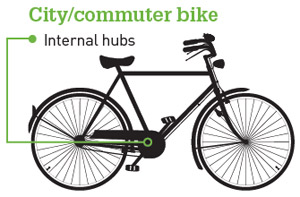
City or commuter bikes
Often come with accessories such as a rack, mud guards and lights. They’re a wallet-friendly option – bike accessories can add about $200 to the total if you purchase them individually.
- Upright and comfortable
- Often have internal hubs
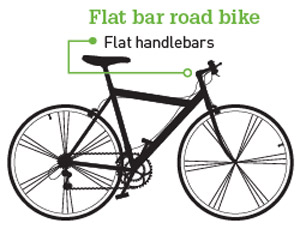
Flat bar road bikes
Similar to a drop-handlebar road bike, but with flat handlebars, these are suited to a longer, speedier commute.
- Least upright commuter bike
- Faster than many similar bikes
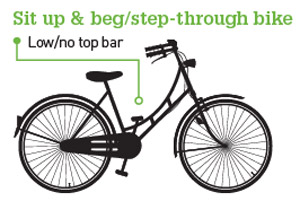
Cruiser or step-through bikes
Also sometimes called “urban” or “sit up and beg” bikes, these are good for relatively short, relaxed rides.
- Low or no top bar, so you can “step through”
- Very upright
- Slower than other commuter bikes
- Comfortable
Folding bikes
These are good if you’re commuting by train and only want to ride part of the way. See more in our folding bikes buying guide.
Mountain bikes
These usually have shock absorbers and fatter tyres to handle off-road riding, from dirt tracks to hardcore downhill trails. However they can be quite good for casual and city riding too, and their robust design makes them good at handling bumps such as kerbs and potholes. Some riders might prefer them to the usual urban bikes listed above.
Electric bikes
These are either pedal assist (helps the rider pedal) or throttle-powered (no pedalling required). If you’re likely to be slogging up hills or travelling longer distances this may be the option for you. You can also buy conversion kits to turn your current bike into an electric bike.
Choosing the right size
Getting the correct frame size is essential to a good ride. One that’s too big or small will compromise on feel and comfort. There are plenty of specialist fitting services on the market, but if you’re just looking for a basic city bike, look for a model where most of the weight’s carried by your feet and bottom, not your hands.
- Height: Most bike size measurements are based on the seat tube length (the vertical bar from the pedal cranks to the saddle). Make sure you can stand over the bike with some clearance. For the best saddle height, place your heel on the pedal. When it’s at the bottom of the stroke, your leg should be straight.
- Stretch: The length of the top tube (seat to handlebars) is also important. It determines how far you’ll have to stretch while riding. There’s no simple guide here, but comfort is crucial. Make sure you’re not stretched out or too bunched up on the bike.
Frame material – steel, aluminium or carbon fibre?
The frame material can have a big effect on how the bike handles and how easy it is to carry around.
Steel
Common on classic bikes such as the Dutch step-through.
- Pros: absorbs bumps; strong.
- Cons: rusts easily; can be heavy.
Aluminium
Common on city-style bikes
- Pros: lighter than steel; doesn’t rust.
- Cons: doesn’t absorb bumps.
Carbon fibre
Not common on city-style bikes
- Pros: light; absorbs bumps.
- Cons: expensive.
Gears – how many and what type?
How many?
Many modern bikes come with 27 gears – much more than you’ll need for commuter riding. In the city, five to eight gears is plenty, although more may be useful if you’re riding in a hilly area. Additional gears will cost more, add weight, and increase maintenance issues.
Quality
Gears come as part of a groupset. This includes everything making up the gears (front and rear derailleurs, cassette, chain, cranks and shifters) as well as the brakes. Each groupset manufacturer makes different grades (from entry-level to pro) for both mountain and road bikes (commuter bikes can fall into both categories).
As the grades improve, groupsets get lighter, have more gears, are more durable and perform more efficiently. But if you’re in the everyday commuter group, you probably won’t notice much difference between low-end and high-end groupsets. As long as the gears are kept clean and looked after properly, a lower-end groupset is fine.
Internal hubs
Internal hubs – where the gear system is inside a covered chamber – are a good option for everyday cyclists. They’re low maintenance, and gears can be shifted while you’re stopped. On the downside, they make it fiddly to remove the wheel if you have a flat tyre, and can be pretty bulky.
Wheels and tyres
There are a few things to consider to get the right wheels for commuting.
- Durability: double-walled rims are stronger than single-walled ones.
- Spoke count: a higher spoke count is better if you ride on bumpy paths.
- Ease of removal: quick-release wheels make life easier if you have a flat or want to throw your bike in the boot. On the downside, they also make it easier for someone to steal your wheel.
Tyres
- Width: choose a slightly wider wheel over a slick road bike tyre for commuting. They’re less likely to puncture and will give you more traction.
- Tread: if you’re riding on the road, avoid knobbly mountain bike tread – it’s meant for off-road biking, not city commutes.
- Punctures: low-quality tyres (that often come on new bikes) are more likely to puncture and wear out faster. Look for tyres that are marketed as being ‘puncture resistant’ – they’ll reduce your risk of a flat. The same goes for riding with the correct tyre pressure. The tyre quality might not be very obvious to begin with so it can be worth discussing the tyres with the store, and researching tyre brands online beforehand.
Grips, pedals and saddle
The comfort of these three components can have a big impact on your ride.
- Grips: there’s a wide variety of handlebar grips available and it’s usually easy to replace grips with ones that you prefer. See how the bike’s grips feel in your hand; are they too narrow or too fat for your hand? Do they give good grip so that your hand won’t shift or slip? If they grips don’t feel right, ask about replacing them with more suitable ones.
- Pedals: simple pedals with no clips are easy to use and good for casual riding. For longer distance rides or commutes you may want to try pedals with toe clips that your shoe fits snugly into; these stop your foot slipping off. They also help make the ride more efficient; as one foot pushes the pedal down, the other foot is pulling its pedal up. For the ultimate in efficient riding you’ll want clip-in pedals, for which you’ll need special cycling shoes that clip onto the cleats on the pedal. Be warned, these take practice to use!
- Saddle: there’s a wide range of saddles, from wide, comfortable saddles usually found on cruiser bikes, to narrow, firm saddles on road bikes. Saddle comfort is very important so try before you buy.
Bike accessories
Some bike accessories are essential for your ride, but which ones exactly? We believe the following are worth the cash:
- Helmet and bell: this almost goes without saying, but in case you need a reminder, you must wear a helmet with an Australian Standards sticker. You’ll also need to have a bell fitted to the bike.
- Lights and reflector: if you’ll be riding at night or in low light, you’ll need a front white and rear red light that are visible for 200 metres. Some lights can be charged by USB, others have batteries. If you’re into green power, some bikes come with dynamo hubs, which are pedal-powered lights. See our bike lights buying guide for more information. When riding on the road at night, you must have a rear red reflector, and preferably a white front reflector as well.
- High-visibility vest: construction sites aren’t the only place for fluoro vests – they’re also important for safe cyclists. Fluorescent vests or cloths are important for night riding on the road, to make you as visible as possible. In daytime road riding, wear light, bright colours.
- Rack: to attach a bag or panniers: if the bike doesn’t come with a rack, check you’re still able to attach one.
- Luggage: there’s a lot of pannier bags, backpacks and other luggage for cyclists designed for use either on or off your bike.
- Mud guards: even if it isn’t raining, water on the road can splash up from your tyres and onto your clothes.
- Lock: a D-lock is your best bet if the bike is often parked in public spaces. Otherwise a good quality chain can be enough, but be aware that these can be defeated by a professional or determined thief.
- Pump: you’ll need a floor pump for home use (easier to get the tyre pressure right) and a hand pump for the road.
- Repair kit: tyre levers and a puncture kit are essential, especially for regular riders. Levers make it easier to change tyre inner tubes – and repairing tubes costs less than buying new ones.
City cycling tips
Insurance
If you cycle regularly, insurance is worth considering. Sign up as a member with your state cycling body and they’ll usually provide personal injury and public liability insurance, plus income protection in case of an accident.
This insurance generally won’t cover your bike, though, so if it’s a pricey ride there are a range of ways to insure your bike for theft or an accident. Find out more in our bike insurance buying guide.
Maintenance
Depending on how much you ride, you should get a bike serviced every six to 12 months.
Cleaning your chain regularly will reduce wear and tear, and ultimately repair costs. It’s worth signing up to a bicycle maintenance course to learn the basics.
Finding the best route
If you’ve made the decision to start riding to work, or even part of the way, it pays to plan your route. The most direct route isn’t always the safest or the quickest. Consider hills – it’s often easier to ride further on a flatter ride. While main roads can be the most direct, unless they have bike paths, using backstreets often means a safer and more pleasant journey.
There are various digital route planners that can help you find safter routes and bike paths. One we’ve tried are:
- Google Maps – offers bike directions on its desktop format. The bike function is also available in the mobile app versions of Google Maps.
Bike-shopping checklist
Before you shop
Consider these bike-buying questions:
- How far and how fast will you ride?
- What type of terrain will you be riding on? Is it bumpy or smooth? Flat or hilly?
- Will you regularly need to carry the bike up lots of stairs? If so, a lighter bike may be a priority.
Once you’re at the bike shop:
- Does it fit you?
- What’s the frame made out of?
- How many gears does it have?
- What type of pedals does it have?
- Are the grips and saddle comfortable?
- What groupset does it have (brand and grade)?
- Does it have quick-release wheels?
- Does it have puncture-resistant tyres?
- Double- or single-walled rims?
- Does it take a rack and mudguards?
- What accessories are included?
- How long is the frame warranty?
- Does the price include any services?
Cost
Expect to pay around $400–500 for a decent casual bike. For bikes such as flat bar and road bikes, you can find decent models for less than $1000 but expect to pay well over $1000 for good quality.

